 |
-
As unlikely as they are talented, the members of Doolin' are French musicians playing Irish music, recording on a Nashville-based record label. Formed in 2005 in Toulouse by six musicians from widely different backgrounds but united in their love of Irish music, the group's newest album shows little trace of their native land, with lyrics principally in English. The group mostly plays instrumentals, propelled by bodhran playing and percussive guitar work. They also add heartfelt vocals in songs like Bob Dylan's "Ballad of Hollis Brown" and Steve Earle's "Galway Girl." The group has produced an album that should be welcome to fans of high-energy modern traditionalists such as Solas, Lunasa and Flook…
Read Marty Lip's complete review and listen to some of the music.
|
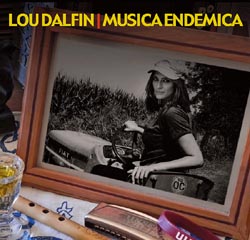 |
-
"You can lose the battle, you can even lose the war; but what counts is having fought."
The Occitan speaking lands of Italy have brought forth their fair share of contemporary and folk musicians, and of these Lou Dalfin is probably the longest-lived and best-known band. On Musica Endemica, their thirteenth album in 35 years, Sergio Berardo's band continues on its folk-rock course - especially if you consider the hurdy-gurdy a rock instrument. It's been five years since their last effort, and it's certainly worth the wait…
Hear some of the music and read David Cox' full review.
|
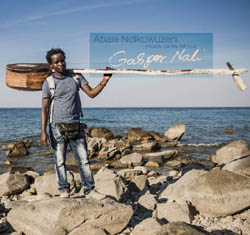 |
-
I thought my knowledge of global music instruments was fairly comprehensive. Then I took a look at the thing balanced on the shoulder of Malawi's Gasper Nali in the cover photo of his album Abale Ndikuwuzeni. I'm sure I'm not the only one who, at first glance, wondered why this fellow didn't take up the harmonica. But I'm open-minded and open-eared, so I had to find out what this bizarrely beautiful axe could sound like. Turns out it's called a babatoni and is Nali's own creation. With its cow skin drum resonator, single string and very, very long neck, it may look like a surrealistic representation of a giraffe but sonically comes across rather like a Brazilian berimbau. The babatoni's sole string is struck with a stick held in Nali's right hand while his left moves an empty glass bottle along the string in order to vary the tone. The effect is melodic in a rudimentary sort of way, producing a shimmering, rise-and-fall metallic buzz that you might assume to be electronically created if you hadn't already gotten the visual.
Read Tom's full review and listen to a few songs from the album.
|
 |
-
Transparent Water occupies space within several different spectra: between plucked and hammered strings, spontaneous and preconceived composition, wandering and purposeful trajectories. Its fluidity reflects a continuity of Cuban pianist Omar Sosa's vision of transcontinental blurring of styles and idioms in an ultimately Afro-diasporic framework. This time around Sosa has partnered with Senegalese kora player and singer Seckou Keita to engage a project of exploratory proportions: the album features elements of multiple African regional musics (Mandinka and Yoruba), Chinese reed timbres, Japanese koto playing, and the Afro-Latin piano and percussion canons.
Read Dylan McDonnell's review, and listen to a full song and some excerpts from the album.
|
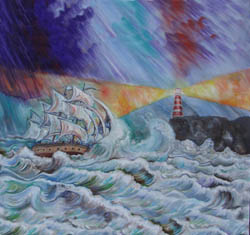 |
-
Describing themselves as "a sort of truncated nautical B-movie featuring a cast of characters raided from Hollywood's worst costume department," Seas of Mirth are a band of merry pranksters sailing the 'pirate folk' subgenre. Pirates are perhaps themselves the ultimate subgenre, and pirate-related themes crawl from the seaweed in many metal and folk-rock oriented bands. Seas of Mirth do the developing scene credit on their second full-length album Hark! The Headland Approacheth…
Read Lee Blackstone's review and sing along.
|
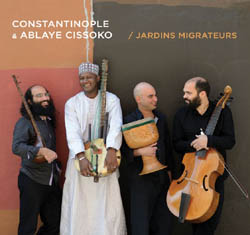 |
-
Constantinople, formed in Montreal in 1998, comprises Kiya Tabassian (voice, setar), Pierre-Yves Martel (viola da gamba) and Ziya Tabassian (tombak, percussion). Over the years the ensemble has collaborated with the likes of Frank London, Loren Sklamberg, Savina Yannatou, and many other artists from Mexico, Spain, Italy, Greece, Turkey, Iran, India, China, Mongolia and Uzbekistan. Joining Constantinople on Jardins Migrateurs is Senegalese kora player, singer and composer Ablaye Cissoko, who hails from a line of Mandinka griots. The project's conceptual "itinerant garden" cultivates a spiritual communion wherein Persian strains (the Tabassians were born in Teheran) engage West African and Western classical elements on mutual aural terrain. Viola and percussion underpin the kora, setar and voice, fostering a deferential exchange that conjures sonic beauty through graceful simplicity.
Michael Stone reviews and shares some of their music with you.
|
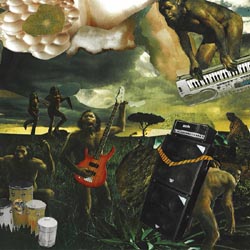 |
-
Los Lichis's story isn't particularly unique, in that it involves a few friends meeting at college, picking up whatever instruments that might be lying about and forging their way toward something that, as far as they're concerned, is unique. Yet because core members Manuel Mathar and Geraldo Monsivais met in the 1990s, far after the innovations of kindred experimentalists in early 70s Germany or Japan, not to mention the LAFMS, and perhaps also because they attended the University of Monterrey, in Mexico, and not an art school in LA or NYC, their story becomes a bit more intriguing… Mathar and Monsivais, along with another friend, Jose Luis Rojas, found themselves with a shared interest in getting way out there, with - amazing for the end of the 20th century - not much in the way of record collecting geekdom as reference points for what they wanted to do. Fortunately for us, the record button was on and this collection, spanning the decade between 1997 and 2007 and culled from CDRs and cassettes, is a fantastic trip into the nether regions beyond pop music's limitations…
Go on a sonic adventure with Bruce Miller and discover music that lacks any boundaries.
|
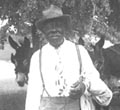 |
-
The music of Washington Phillips and his unique instrument remains singular, easily separated from the multitudes of blues and gospel records recorded in the rural, black, early 20th Century deep south. The ghostly twinkles of Phillips' double zither, the manzarene, caressing a voice seemingly devoid of hurry, carried by the clouds, have only grown more unusual, seductive, and softly brazen with time. Steeped in gospel's oral tradition, but floating on his own instrumental innovations, Phillips created some early genre-defying folk minimalism.
Bruce Miller introduces you to Washington Phillips And His Manzarene Dreams, the latest book and CD set from the ever-interesting Dust To Digital label.
|
 |
-
Bruce Molsky is a veteran of American string bands and transatlantic sessions. Arto Järvelä is on more recordings than one can keep track of, and it was Norway's Ånon Egeland has opened many ears to how musical a munnharpe can be. Rauland Rambles, recorded at the 2016 Rauland International Winter Festival in Norway, contains a great mix of Norwegian, Finnish, and American traditional tunes in various combinations of fiddle, hardingfele, ukulele, kantele, banjo, munnharpe, and seljefløyte…
Greg Harness finds this cross-cultural collaboration to be a treasure.
|
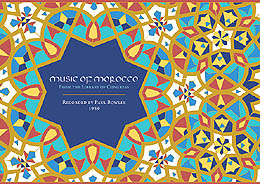
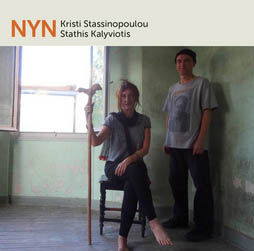
|
-
I asked a number of our writers to tell you about some of their favorite recordings and overlooked gems from 2016. Marty Lipp wrote, "It was tough, dispiriting year, but there were some bright spots among the new releases of 2016. Artists - some from very troubled nations - showed us that hope and joy are available with a willful turn of our proverbial internal dial."
In the first installment, we'll hear from Marty (ML), Michael Stone (MS), Alex Brown (AB), Tyran Grillo (TG), Greg Harness (GH) and your editor, Cliff Furnald. Volume 2 has picks from Lee Blackstone, David Cox and a bit more from the editor. They are not ordered by "greatest" in any fashion, but are simply the picks of a number of our writers, randomly presented to allow you to wander through the world of music they represent.
Volume 1
Volume 2
|
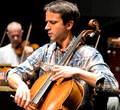 |
-
Uh-oh. Thrace. The gateway between East and West, Europe and Asia. Western trained musicians playing with near-Eastern traditions. Peace. All that crap. By now we know the drill: bloody cellist plays plaintive melodies ripped off from some exotic locale. Rimsky-bloody-Korsakov lives! Chinoiserie Uber Alles and all that. The cultural theorists can scream "appropriation!" The purists can sniff and snort... But then there is the music. Oh, there is the music... Crisp rhythms, expertly phrased, intelligently composed. Intriguing harmonics (especially on "Zarbi & Shustari", which uses a very Thracian-style violin on an Iranian melody, to great effect), gently pulsing drums, subtle melodic variations. Jean-Guihen Queyras leads his quartet, with Sokratis Sinopoulos on lyra and Bijan & Keyvan Chemirani on percussion on Thrace: Sunday Morning Sessions.
Erik Keilholtz shares a few asides, and even his thoughts on the music.
|
 |
-
"The enemy is clearly delineated: he is a perfect model of malice, a kind of amoral supermansinister, ubiquitous, powerful, cruel, sensual, luxury loving…. He wills, indeed he manufactures, the mechanism of history, or tries to deflect the normal course of history in an evil way… The paranoid's interpretation of history is distinctly personal: decisive events are not taken as part of the stream of history, but as the consequences of someone's will." - Richard Hofstadter, "The Paranoid Style in American Politics"
Real Enemies - the big-band production of Vancouver-born, Brooklyn based composer and bandleader Darcy James Argue - is a prescient title for these, our times. It draws inspiration from the work of historians Kathryn Olmsted - who explores U.S. popular fascination with conspiracy theories in her book "Real Enemies" - and Richard Hofstadter, excerpts from whose essay quoted above percolate through this new work… Peppered with audio cameos by Cold War and "intelligence community" household names, under his direction, Darcy James Argue's Secret Society conveys the ambiguity, obsession, psychosis, nagging dread, and Twilight Zone menace-with-a-moral…
Michael Stone takes you inside a powerful new North American work.
|
 |
-
What is the artistic response to uncertainty? Musicians from across the United Kingdom have been asking this question since the Brexit vote, as have those from the United States since the 2016 Presidential election. To find answers, one strategy is to look at the creative community's response from places that have suffered greatly. In many of those spaces local artists have come forward with expressions of sorrow and loss yet also offered a path toward resilience and revival. Often that path looks both backward and forward… With the release of Amira Medunjanin's Damar, Greg Harness explores the path of Bosnian resilience as expressed by the sevdah musical tradition
|
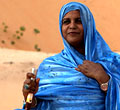 |
-
With its distorted electric guitar, wailing vocals, and a drummer that keeps it all in sync, the album Arbina sounds free, explorative, even trippy, like a young artist who has found her groove through the mostly harmless mischief of a road-bound rebellion, but could one day bloom into an M.I.A.-style revolutionary. It's not all quite what it seems. This is Noura Mint Seymali's second international release after a lifetime of performing at public ceremonies and on record in her home country of Mauritania. She's a seasoned descendant of more than twenty generations of Moorish griot, a social caste of Saharan musicians and performers. Like the griots before, she dresses in a head-to-toe mulafa, singing lyrics that sit on the shoulders of God, country, culture and tradition, along with the hope and blessings they bring forth…
Nokware Knight shares the work of an artist who sings without compromise.
|
 |
-
The River is a collaboration of forces between the ETHEL string quartet and Native American flute player/maker Robert Mirabal. The recording sessions took place under the open skies of Taos Pueblo, New Mexico, the surroundings of which are referenced by a dusting of field recordings. Wind and water, for instance, harmonize in the ambience of opening track "An Kha Na." Its blend of indeterminate and composed sounds makes the introduction of strings and the singing of those playing them seem like something from another plane of existence. An overwhelming impression of distance prevails when the song transitions into "Tuvan Ride" through sounds of horses. While this jump from an American heritage site to the Mongolian outback might seem arbitrary in theory, in practice I can hardly imagine a clearer manifestation of the album's title. Here the river is no metaphor, but the very interconnectedness of life on Earth.
Read Tyran Grillo's review and listen to a full track and some audio excerpts.
|
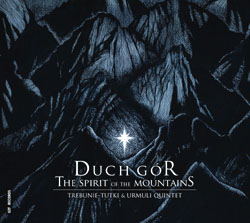 |
-
A Polish folk group institution, Trebunie-Tutki have been releasing recordings since the early 1990s. Based around family (lead Kryzysztof Trebunia-Tutka, on violin, flutes, bagpipes, and wooden horns, and Anna Trebunia-Wryrostek, on cello, are brother and sister), Trebunie-Tutki practice the 'góral' music of the Polish highlanders. Over the years, Trebunie-Tutki have not only performed traditional material, but they have also experimented with musicians from other cultures… Trebunie-Tutki's latest exploration on Duch Gór: The Spirit of the Mountains is with the Quintet Urmuli, a group that has been performing for twenty-five years, and who hail from Tbilisi, Georgia.
Listen to the music and read Lee Blackstone's review
|

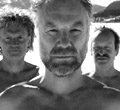
|
-
New Nordic Roots
Groupa holds traditional Nordic folk music in high regard, but they are not afraid of breaking down boundaries and re-creating well established songs in their own way. The trio has been combining the traditional with a curiosity for the experimental for over 30 years. This often means using instruments that are out of the ordinary, including wood, stone and bells. Maria Ezzitouni talked with violinist Mats Edén about the history of the band, what makes them successful, and about the criticism they have faced by striving forward on their own path.
Groupa mixes Nordic folk music with new thinking and innovation on their tenth album, Kind of folk - vol. 1 Sweden. Most of the tracks are their own interpretation of long-established folk traditions from Sweden, with a few pieces composed by the trio of Terje Isungset (percussion), Jonas Simonson (flutes) and Mats Edén (violins).
Read Maria's review of the recording and listen to some songs and samples.
|
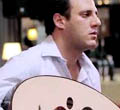 |
-
Issa Murad, a Bethlehem native, developed his chops (oud and voice) at the Edward Said National Conservatory of Palestine, furthering his career in Cairo for a couple of years before moving on Paris in 2007, where he wrote an ethnomusicology thesis at the Sorbonne and dove into the city's cosmopolitan musical milieu. In Paris, Murad formed the ensemble Joussour in 2012 as an experimental sextet whose Arabic meaning is "bridges," an apt metaphor for his compositions, which explore connections between the improvisatory bent of Arabic, Syrian, Turkish, Balkan, Indian, Latin and world jazz sonorities. On the album Joussour,
Michael Stone finds a world of illuminating improvisation, awaiting those who seek a different kind of different.
|
 |
- Greg Harness writes, "I love a good anti-Nashville anthem. And I especially love "Z," from a self-described "half-gringa, half-Chicana, fiddle-playing Carrie Rodriguez." It's a rollicking honky-tonk song, underscored by a message of perseverance ("Doors are gonna open if you want them to / But you might have to knock 'em down"), and it fits my mood these days." Her new CD Lola shows off the "the ranchera side" of Rodriguez musical personality with "hard hitting original songs and striking takes on classics wrapped up in a message of perseverance and hope," making this one of Greg's "Best of 2016" recordings.
|
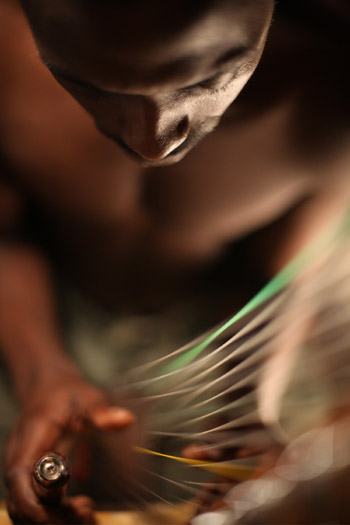 |
-
Gambian multi-instrumentalist Dawda Jobarteh and his top-notch band of Danish, Cameroonian, Ghanaian, Cuban, and Gambian musicians embrace an accessible fluidity of styles, and thus emotions, on Transitional Times. The album centers on Jobarteh's masterful playing on the kora, the Mandinka West African harp that has became a staple piece of transnational "world music" projects. His group's particular matrix of plucked strings, electric rock instrumentation, spiritual jazz, and a loosely unifying theme allows them to toy with labels and stereotypes while opening into less-trodden ground.
Despite belonging to a lineage of lauded jaliya or griots who helped spread recognition of the kora beyond West Africa (including his grandfather, Alhaji Bai Konte), Jobarteh only began to focus on the kora after relocating to Denmark, having initially studied the calabash in the Gambia. However, he exhibits all of these skills on Transitional Times, which embraces both songs from the jaliya tradition, as well as original and adapted compositions that incorporate other idioms.
Read Dylan McDonnell's full review online now, along with many musical examples.
|
|



|
-
Three Audio Features
First, we take you to Viljandi Folk Music Festival in Tallinn for a concert with Estonian artist and singer Mari Kalkun and her ensemble of Finnish players, Runorun. The quartet plays variants of the stringed zither common to northern Europe, called kannel, or kantele, along with double bass and percussion. The concert was performed on April 1st of 2016, at Tallinn Music Week, part of the Viljandi Folk Music Festival Showcase. Listen!
Next, a group of musicians from Bristol, England who call themselves Three Cane Whale. These recordings were made in the Old Barn in Kelston, Roundhill, in the south of England, between Bristol and Bath. They play what the ensemble calls folkish minimalist miniatures. The musicians are Alex Vann (mandolin, bowed psaltery, bouzouki, zither, music box, etc), Pete Judge (trumpet, harmonium, dulcitone, glockenspiel, lyre, etc), and Paul Bradley (acoustic guitar, harp, etc). We begin with a set of three pieces that all feature the words and voice of their guest, Jon Hamp and then carry on from there. Listen!
Finally, we hear Albaluna, a folk music ensemble that uses medieval and early folk music from Portugal, and merges it with Turkish and Balkan sounds. We're going to listen to a suite in three parts called "Sefarad," that brings in the Ladino Sephardic traditions of Jews in Andalusia and the Balkans. The three works are:
La Galana and the Sea
My daughter
The Roads of Sirkeci
Listen!
All of these performances are available online with the help and cooperation of the performers, who have generously allowed us to present the music to you. There are links to find out more about each ensemble.
|
 |
-
Here's a two-disc collection of East African infectiousness that defies words: Urgent Jumping: East African Musiki Wa Dansi Classics. Tracks spanning the decade between 1972-82 fill these discs, and since curator, liner-note writer, and London DJ John Armstrong has already been spinning stuff like this for decades, his choices are, well, choice. The story apparently goes that Sterns scored a valuable and extensive collection of master tapes, housing tremendous amounts of music that hasn't seen the light of day since its original release. Armstrong went through it, landed on some 1,000 tracks, shortlisted 60, whittled that down to the current 27, and voila. Kenyan Benga and Zilipendwa are the thrust here, as they were also the most popular styles at the time, and Swahili tends to be the language in which much of this stuff is sung, though that is certainly not always the case. While tracks from Uganda, as well as Taraab from coast don't factor in here, the sheer amount of grooves percolating in Tanzanian and Kenyan cities were so vast that it doesn't matter.
Listen to a full track and some excerpts from the 2 CDs and read Bruce Miller's review of a collection that "never once lets up."
|
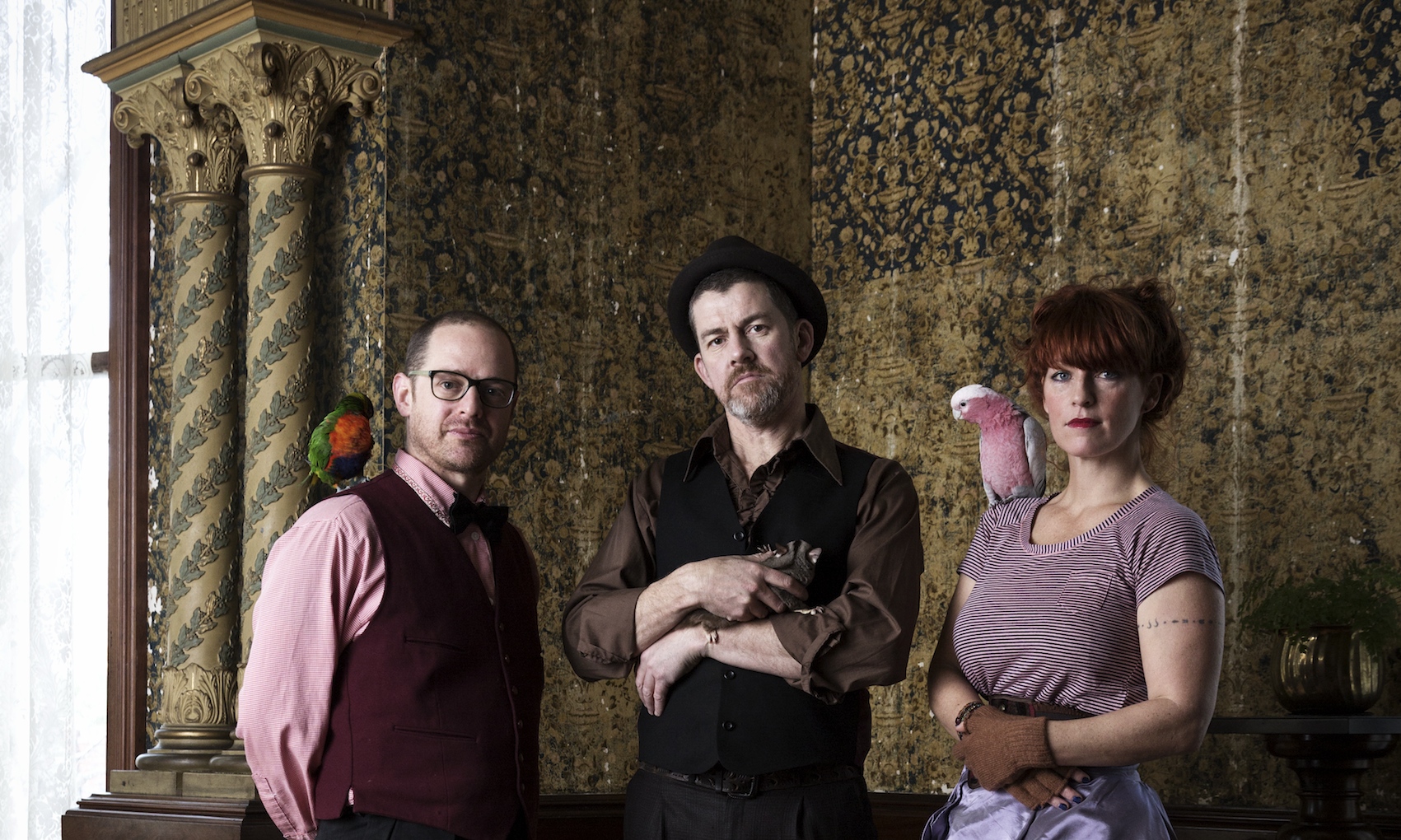 |
-
The gothic is distinguished by certain features: abandoned, crumbling architecture; a sense of the sinister; an erotic titillation of the senses arising from the repressed mind. The monstrous lurks in wait. And while we think of the gothic as being an aesthetic of Victorian England, the band Bush Gothic point towards a kind of gothic to be found in England's far-off penal colony, Australia.
Bush Gothic are a trio, comprised of Jenny M. Thomas on fiddles, vocals and piano; Dan Witton, on double bass and backing vocals; and Chris Lewis, on drums, banjo, and vocals. For The Natural Selection Australian Songbook, the trio's sound is fleshed out by The Lonely String Quartet. Bush Gothic's project is to take popular Australian songs - particularly traditional songs of transportation, separation, the meting out of justice (criminal, and otherwise), murder, and wandering - and bring to them fresh arrangements.
Lee Blackstone finds a band best when possessed by their darker instincts.
|
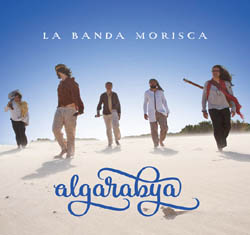 |
-
2016 saw the release of two fine discs that explore the Arabic and Islamic presence (past or present) in the southern portion of their respective states: France's Occitania and Spain's Andalucia. Both discs feature sounds and instruments associated with two cultures and with both sides of the Mediterranean, emphasizing the historically close ties and similar musical origins.
La Banda Morisca is a descendant of the legendary Spanish band Radio Tarifa. Algarbya is the name the Christians gave to the Arabic language in the days of the so-called reconquest. If the music sounds like of fusion of Arab, Andalucian, Flamenco and other styles it is because these are related musics that share a common origin. Du Bartas, from the Occitan region of France, isn't as musically adventurous, but perhaps it is more fun. Named after a 16th century Occitan bard, they are a rollicking quintet. The 14 songs on Cinc are primarily in Occitan, and they create a new sound with its nearly unstoppable energy.
David Cox reviews two cross-Mediterranean gems.
|
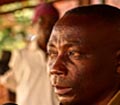 |
-
To a listener not familiar with Chichewa, a language found in the southern African sliver-sized nation of Malawi- which is probably everyone who might buy this album - there's nothing to suggest that this is music made by prisoners subjected to wretched living conditions and unquestionably unjust sentences. Yet, one look at the song titles, with somber names such as "All is Loss, "Ambush of the Slaves," "AIDS has no Cure," and "Protect Me," and it becomes clear that a particular set of circumstances guides this collection. Anyone familiar with Michael Stone's Rootsworld review of the previous volume can assume that much of the same can be applied to I Will Not Stop Singing: there are few notes or explanations. This is music without guidelines, meant to be heard as part of a specific, raw injustice but able to be transportive without a backstory...
Bruce Miller takes us back to revisit the Zomba Prison Project.
|
 |
-
KUKU, the American born and Nigerian raised singer-songwriter, has released an album of his observations after questioning his faith in organized religion, politics and authoritarian regimes. He used to be a practicing Muslim who kept his doubts and questions to himself until he let ethics decide his fate. After realizing religion often caused endless wars, he adopted an agnostic view and believes morality and religion aren't necessarily connected. Aware that many may disagree with his ideas, he decided to entitle his sixth release, Ballads & Blasphemy: The Areligious Gospel of Adebola KUKU.
Alex Brown finds a a cohesive production that strikes an honest tone.
|
 |
-
Two recent releases from Sweden feature the incomparable Mats Edén playing the violin and accordion, each with a different troupe of musicians who come together to realize his broad musical vision with all its disparate elements. Apple Blossom gives us the fiddler as composer, with a host of musicians performing his work. With long time collaborator Jonas Simonson on flute, and Mattias Perez on 12 string guitar, the Crane Dance Trio explore Swedish folk in a contemporary setting.
Hear some songs from both albums and read David Smith's full review.
|
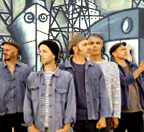 |
-
Moussu T e lei Jovents serves up an unsentimental and bittersweet mélange, blues-cabaret-chanson rooted in a fiercely local sense of place, profoundly altered by the history of French colonialism, immigration from the colonies via the Mediterranean port of Marseille dating to the ancient Greeks, Festus Claudius "Claude" McKay's 1929 novel "Banjo" (the Harlem Renaissance classic about Caribbean immigrants set in Marseille), labor organizing, the Socialist International, World War II and the contemporary European conundrum… With Navega!, Moussu T e lei Jovents offer keen commentary on the vexed, now-global human encounter first played out in the port cities of colonialism's Atlantic World, from West Africa to the Americas to the Mediterranean.
Read Michael Stone's review and hear two full songs and a few excerpts from the album.
|
 |
-
Dawda Jobarteh was born in Gambia, part of a family of hereditary musicians, well respected griots. But Jobarteh was an adult and far from home and family, living in Copenhagen when he first picked up the instrument, teaching himself the music of his youth, and composing new sounds in modern modes. Transitional Times is a blend of tradition remembered and an immigrant's vision of new worlds. The music swerves from pure solo strings to jarring, modern motifs. He plays with pop and jazz idioms, but it always feels very rooted in the old world. I chose "Our Time in Tanjeh" as our featured song because it gently dances between tradition and today. It's about a fishing village in Gambia, but it is dreamlike, evoking his home in Denmark as much as his memories of childhood.
Listen to this full song, and some other exceprts of new music for kora.
|
|
|
-
In his recent review of The Young Man's Harp, the final recordings by Vieux Kanté, Bruce Miller wrote, "Frustratingly, this debut from blind kamalé n'goni master Kanté, will likely be the only record to come out under his name, as he died suddenly in 2005, and these recordings, made that year, languished for another 11 years."
Well, I was recently informed by one of our readers that, in fact, there is another set of recordings by this master of the instrument, made in Bamako in 2001, recorded informally by Vincent Dorléans.
Presented here are six solo performances with voice and kamalé n'goni by Vieux Kanté, to complete the limited picture we have of a wonderful artist, too soon gone.
|
|
|
-
Valfart is the Danish word for pilgrimage, and the ensemble Valfart was begun as a theatre project for a pilgrimage on the Danish island of Mors. They draw from traditional Danish music, but they also draw from Balkan, Middle Eastern, and American old-time music. Far too often bands describe themselves with a mishmash of hyphenations like Nordic-Balkan-Klezmer-Punk-Bluegrass-Cumbia-Polka, and those bands often sound mishmashy. Valfart takes a better path by exploring the music of each tradition for what it is, not as a conglomeration, but as individual expressions...
Valfart's accordionist is Mette Kathrine Jensen, who is also half of the duo Jensen & Bugge. They have released a pair of Live in Denmark recordings of Danish folk tunes performed with the Danish-American accordionist from Iowa, Dwight Lamb. Lamb brings a number of Danish tunes remembered from his American childhood played by Danish friends and relatives. Jensen and fiddler Kristian Bugge have been steeped in the traditional music of Denmark and beyond. As a trio, with doubled accordions, they put out an impressive set of deeply rooted Danish traditional tunes.
Greg Harness explores Denmark, unhyphenated. Listen in!
|
|
|
-
It's been almost twenty years since the release of the first volume of the Éthiopiques series introduced the rest of the world to the vintage sounds of Ethiopia's so-called “Golden Age," and what was once a lonely mission of cultural retrieval and historical memory has become the inspiration for a whole new generation of living, breathing artists. uKanDanZ describe their sound as “Ethio-Crunch” and it's clear from their sound and lineup — guitar, bass, drums and sax — that they're heavily inspired by Getatchew Mekuria's skronky improvisational work. Awo is the group's second recording. Qwanqwa is another trans-national, intergenerational project, initiated by American violinist Kaethe Hostetter, who moved to Addis Ababa in 2012 to immerse herself in authentic Ethiopian sounds at their source. There she teamed up with Mesele Asmamaw (electric krar), Dawit Seyoum (electric bass krar), and Samson Sendekou (percussion). Their latest release, Volume Two, features six gorgeously atmospheric compositions built around the interplay between the krar — Ethiopia's iconic five-stringed lyre — and the violin. Debo Band came together in 2006, led by Ethiopian-American saxophonist and ethnomusicologist Danny Makonnen, and heavily inspired by Getatchew Mekuria. The group put in the work and mastered a small repertoire of Ethiopian classics. But don't confuse Debo Band with a revival act. What made them exciting from the beginning was their refusal to be fit with a four decade-old musical straitjacket; going beyond mere covers to write original songs grounded in the music of Ethiopia, and Ere Gobez shows them in full form.
Tom Pryor shares the music of three bands who keep the Éthiopiques spirit alive.
|
|
|
-
Harp & A Monkey trade in a kind of idiosyncratic, independent folk music long on vignettes from real-life, which are then refracted through the group's readily identifiable sound. Simon Jones plays guitar, viola, and harp; Andy Smith offers banjo, guitar, melodica, and electronic programming; while Martin Purdy sings and plays accordion, keyboards, and glockenspiel. War Stories focuses the band's storytelling powers on the First World War, with the aim of the group shedding light on the WWI experience in their own style. Purdy is a World War I scholar, and he has written two books on the subject. As a result, Purdy, Jones, and Smith have risen to the challenge and created a thematically rich album that is profoundly moving.
Read Lee Blackstone's review and listen to their music.
|
|
|
-
Reeds, the second volume in Dust-to-Digital's "Excavated Shellac" series of rare and previously unreleased recordings, is a trip back in time and across continents. The 17 tracks all feature reed instruments, those that make sound when a player's breath causes a reed to vibrate (various single- and double-reed instruments), and those that employ a wind chamber or bellows to generate sound waves (accordion, concertina, harmonium). The selections originally were released as 78 RPM recordings issued from the 1920s to the early 1950s, with one outlier, from the early 1960s.
Read George de Stefano's full review and listen to some of the tracks from the set.
|
See previous reviews and features from 2016
|
|
-
The Valencian Country of Spain includes the three provinces of Castellon, Valencia and Alicante (Alacant) echoing a medieval kingdom that was created when Catalan nobles and an Aragonese king displaced a part of the Arabic civilization of Spain in the 13th Century. In 1707 the battle of Almansa established Castillian rule. After a long decline, the Catalan language had given much ground to Castilian but it held on, particularly in the areas between the cities of Valencia and Alicante. But there is a resurgence in the culture and music of the region in recent years, with many bands acheiving note outside of their region.
David Cox looks at Valencia and the new music from an old culture.
|
|
|
-
Dobrek Bistro's latest recording, Featuring David Krakauer, marks the fifth excursion by Polish-Austrian accordionist Kzysztof Dobrek's ever-fluctuating music collective. On previous projects, Dobrek has highlighted musics of Brazil, Mandinka West Africa, western China, and North Africa, among others. Here, however, Dobrek Bistro has focused primarily on styles of the Jewish diaspora, most prominently out of Central and Eastern Europe, with distinct Sephardic and Brazilian musical influences. The core band is Vienna-based but, like previous Bistro offerings, is an international affair, featuring Russian-Austrian Aliosha Biz on violin and viola, Alexander Lackner on double bass, São Paulo-born Luis Ribeiro on percussion. Completing the ensemble is American David Krakauer on E-flat and bass clarinets, a stalwart of the New York klezmer and avant-garde scenes. On every track, Krakauer leaves his sonic stamp: an expert mixture of the European classical canon, Arabic maqam-based musics, Yiddish musics, and jazz.
Read Dylan McDonnell's full review and listen to some of the songs from the album.
|
|
|
-
Cambodian folk music survives 40 years after Pol Pot's genocide, which wiped out almost 1/4th of the country's population. In fact, YouTube is covered with videos from Cambodian television featuring Chapey Dong Veng players sitting cross legged, unspooling stories over furious single-chord runs on this incredibly long-necked, two-string lute… The musicians recorded for Khmer Rouge Survivors: They Will Kill You, If You Cry, as young as 50 but mostly older, have shrapnel scars and stories of being child soldiers fighting against the Vietnamese… Oh, but the music is fantastic! Chapey master Soun San wails away with the heaviosity of a North Mississippi blues man or woman, or well, a rural Cambodian Chapey master. Blind singer Keut Ran delivers vocal dynamics on par with the twistiest of Appalachian singers…
Read Bruce Miller's full review, and listen to a few tracks.
|
|
|
-
In Dedication to Sylvia Rexach, Richmond, Virginia's Miramar presents a work devoted to faithfully reviving and honoring the music of the titular Puerto Rican composer, multi-instrumentalist, poet, and journalist (1922-1961). Rexach was an autonomous musical professional (as a woman this was an anomaly in Puerto Rico at the time). As Yannis Ruel mentions in the dual Spanish-English liner notes, she “defined the feminine bolero” from a very young age. Rexach's songs were recorded by many of Puerto Rico's most famous vocalists, and have made their way, in brilliant fashion, into the interpretive hands of Miramar. Carried primarily by the lush parallel harmonies of Rei Álvarez and Laura Ann Singh and the keyboard work of Marlysse Simmons Argandoña, Rexach's songs feature vividly sensual lyrics and complex metaphors that, according to Ruel, were unprecedented for the bolero, and popular romantic music in Puerto Rico more broadly...
Read Dylan McDonnell's full review and listen to some of the songs from the album.
|
|
|
-
In a piece I wrote a few years ago for RootsWorld, I referred to Annbjørg Lien as “an all-around musical treasure.” Drifting Like A Bird (Heilo) makes me believe those words even more. This Norwegian hardingfele and nyckelharpa player has put out a number of recordings performing traditional Nordic tunes, writing for string quartets, and combining electronic and ambient sounds with jazzy and bluesy musical ideas, often working with world musicians from multiple countries.
Read Greg Harness's full review and listen to some of the music.
|
|
|
-
With NYN, Kristi Stassinopoulou and Stathis Kalyviotis have created an absolutely wonderful reprise to their earlier Greekadelia. Here they are, addressing the meltdown of Greece by offering music of incomparable beauty and inventiveness. No one I know has combined psychedelica and traditional music like this duo. But still, I unwrapped this CD expecting a letdown. After all, almost every other contemporary Greek artist has been drawn in to the maelstrom of the financial crisis that has been ravaging the country since 2011, forcing them to either write some kind of agitprop blandness or to withdraw completely. Artists have been twitter-bullied because of their positions regarding the crisis. Others have stopped getting music out for financial reasons or because, frankly, who cares about art when people are going hungry all around us? It's very difficult to produce music when as an artist you seem irrelevant and when your audience cannot buy it. According to a recent survey, each record is expected to sell around 1,000 copies. Yet, this music comes pouring out of the speakers.
Listen to their music and read all of Nondas Kitsos review.
|
|
|
-
On Swan Song, producer and composer Daniel Diaz plays acoustic and electric basses, guitars and pianos, vibes, hang, harmonium, percussion, accordina, charango, ukulele, and synths, along with 15 guest musicians from four continents, to depict a world uniquely his own. It is a culmination of his many talents, showcasing his meticulous attention to detail in every respect. That Diaz has spent much of his career as a composer writing for film and television will come as no surprise as the strains of “Otoño y Martes (Love Theme No. 1)” fill the air with their song. There's something sweet yet also dark about it that would feel right at home in a Pedro Almodóvar film. On its own terms, however, the music combines soft atmospherics with sharply defined melody.
Read Tyran Grillo's full review and listen to some of the music.
|
|
|
-
Narrante is a new recording by two talented Iranian musicians, guitarist Golfam Khayam and clarinetist Mona Matbou Riahi, who also call themselves the Naqsh Duo. It combines improvisational ideas from Persian music with structural ideas from contemporary Western art music. While this sort of hybridization often yields dull, even disastrous results, this recording successfully brings the best of both worlds to the table to create something entirely new and engaging…
Read Erik Keilholtz' full review and listen to some excerpts from the recording.
|
|
|
-
Frustratingly, The Young Man's Harp, the debut from blind kamalé n'goni master Vieux Kanté, will likely be the only record to come out under his name, as he died suddenly in 2005, and these recordings, made that year, have languished for another 11 years. His instrument, a direct descendent of the donson n'goni, which is not only larger, but relegated to hunter's ceremonies, was first introduced in the 1960s as a way to free players from formalities associated with the larger harp.
Bruce shares his frustration in his full review, along with a full song, a video and some shorter song extracts.
|
|
|
-
Tanga is an ensemble led by a musician of the same name from the southern Madagascar Highlands. Le Trésor des Ancêtres presents music centered on the kabasy, a tenor ukelele-sized lute, which they play with an intense drive. Tanga has used their music to reach out to local populations throughout the Isandra Valley; they encourage smart cultivation, nutrition, and community protection from thieves. The members straddle life between the rural traditions and the future.
Listen to the music and read Bruce Miller's full review online.
|
|
|
-
Ten Strings and a Goat Skin, an Acadian bilingual folk trio from Prince Edward Island, has a clever name, the band's moniker referring to a fiddle, a guitar, and a bodhràn. The latest album, Auprès du Poêle (Around the Woodstove), shows that the group has arrived. Half the tracks are traditional but the approach is modern, albeit still acoustic. Some of the original tunes could also pass for traditional. The two Gallant brothers have now added banjo to their fiddle and bodhràn skills and Jesse Périard is an adept guitarist. They're still young and they don't fit strictly in an Acadian niche but they're already on the way to garnering a lot of respect at home and abroad. Read Paul-Emile Comeau's full review, hear a song and some extracts, and see a short film set to the song "Coal Not Dole" by Kay Sutcliffe and Paul Abrahams, performed by the band.
|
|
|
-
The ensemble documented here—consisting of kamancheh (Iranian spiked fiddle) master Kayhan Kalhor, Kurdish singer Aynur, Azerbaijani pianist Salman Gambarov, and tenbûr (fretted string instrument of Central Asian heritage) virtuoso Cemîl Qoçgirî, who hails from Germany but is of Kurdish descent—has its roots in 2012, when the musicians met and played at the Morgenland Festival in Osnabrück, Germany. A year later they recorded the present disc, reviving the magic that must surely have transpired during that fateful meeting. Together they create a land of their own into which all are welcome to press their feet. To that metaphorical end, Hawniyaz, the album's Kurdish title, means "everybody needs everybody else, each of us is there for the other," and this sentiment is felt in each of the program's five expansive territories.
Read Tyran Grillo's review and listen to some of the music.
|
|
|
-
Those of us who know and love London-based Palestinian singer Reem Kelani's brilliant first album, Sprinting Gazelle (2006), are delighted that after nine long years, she has finally released album number two…. For Live at the Tabernacle, Kelani has found and collaborated with a new set of backing musicians. Based in England, she has usually found it necessary to perform with non-Arab musicians to present her repertoire and this album demonstrates that she has trained her band very well. They're a tight, supremely well-rehearsed machine whose members are also able to improvise brilliantly.
Kelani offers listeners an introduction to the deep tradition of Palestinian music, and especially the lively rural women's repertoire, not well documented or otherwise performed on stage. She does them both in what is very close to the original style, as well as offering up contemporary interpretations that enhance rather than detract from the original roots.
Read Ted Swedenburg's full review and listen to a track from the album as well as some excerpts.
|
|
|
-
Chico Trujillo's 2016 release, La Reina De Todas Las Fiestas, charges through numerous sonic worlds and apparently, performance settings, bent on an atmosphere of play and healing. The album's concept is driven by the eponymous Reina, an allegorical feminine figure of latinidad or “Latinness” that symbolizes Latin American celebration and community across “race, age, and class,” according to the album's liner notes. Begun in 1999 in Villa Alemana, Chile by lead singer Aldo Enrique Asenjo Cobillos aka “Macha,” the group draws on a propulsive synthesis of styles including cumbia, rock, rap, and Mexican ranchera. Consequently, La Reina positions the band at the center of an imagined street-based festival, constantly progressing and picking up different musical elements along the way.
Read the review by Dylan McDonnell and listen.
|
|
|
-
There is something special about the anxious, lengthy anticipation of a new record from a band with tremendous promise, especially when the finished product surpasses rather high expectations. This is how special albums are made and M.A.K.U. SoundSystem has produced a bit of magic on their fourth release, Mezcla. The New York City based ensemble, primarily composed of Colombian immigrants, has gained plenty of recognition since they kicked things off six years ago and their debut recording is a doozy… A variety of Afro-Colombian rhythms power this effort, with touches of West Africa alongside funk and jazz channeled through vintage synthesizers, and a mighty brass/woodwind section. Lead vocals are handled by Liliana Conde, who also adds percussion, and Juan Ospina, who plays electric bass. Most of the members contribute backing vocals adding depth to an already full sound."
Alex Brown reviews, and you can listen while you read.
|
|
|
-
Singer-songwriters Gilberto Gil and Caetano Veloso have been close friends, fellow political firebrands, and musical co-conspirators since the 1960s. They were at the forefront of Brazil's Bahia-forged Tropicália movement, which incorporated rock n'roll and rambunctious electric guitars into African-based folkways, while moving away from the more polite, subtle, jazz-inflected Carioca bossa nova, aka “the whisper heard around the world... Now septuagenarians, both men have been gently touched by time, achieving a mature patina while losing none of their ability to charm, inform, and enthrall. The 28 live tracks on this double CD set, largely culled from their own extensive back-catalogs, showcase the pair alone with two acoustic guitars, engrossed an intimately nostalgic give-and-take...
Christina Roden shares her take on 'Dois Amigos, Um Século de Música.'
|
|
|
-
"Artisanal" has become a marketing cliché used to sell everything from mason jars to $10 chocolate bars to fancy mayonnaise made in cute Brooklyn shops. But in Italy, artiginale connotes high-quality, handcrafted goods made in small quantities, rather than mass produced. By that definition, the debut album by Terra Sangue Mare, a trio led by the Sicilian-American vocalist Michela Musolino with multi-instrumentalist Michael Delia and guitarist, organetto player, and composer Fabio Turchetti. qualifies as artisanal, from its production to its distinctive take on Sicilian music to the CD package design, with an origami paper cutout that holds the disk.
George de Stefano finds it an atmospheric, often haunting work, ethereal and earthy.
|
|
|
-
Audio Feature
Kristi Stassinopoulou and Stathis Kalyviotis rocked the Greek music world a few years ago with their recording Greekadelia, described by RootsWorld's Nondas Kitsos as "highly recommended, a definitive recording for the Greek music scene, one that ought to become a standard. "
Three years on and we now get to hear where they will go next, on their new recording, NYN. I asked Kristi if we could preview a track for our readers, and here is what she and Stathis sent for you to listen to.
|
|
|
-
Music and other art forms have already proven to be conciliatory forces in the long-festering conflict between Israelis and Palestinians, so it seems a little disingenuous when, at the beginning of the documentary East Jerusalem/West Jerusalem, Israeli singer/musician David Broza and Palestinian cinematographer Issa Freij ponder if the differences separating their cultures can truly be put aside. But even if the answer to that still-begged question remains unclear, this wonderful and heartfelt film shows just how unassumingly powerful musical collaborations are and must remain as the cultural, religious, ideological and territorial battles rage on.
Tom Orr reviews the film by Henrique Cymerman and Erez Miller.
|
|
|
-
"We want to show the Algerian youth that we all have a voice and that no one can take that away from us. It is not a weakness to express feelings, and even the deepest issues can be dealt with in a humorous way. Humor gives us distance and the possibility to laugh at problems in everyday life." - Sadek Bouzinou
There is a definite reggae beat, repetitive refrains and strong vocals mixed with the mystique of North African instruments. It's easy to listen to, difficult to put into a category. This is the eight-man band, Democratoz; part of a new generation of Algerian musicians, pushing boundaries, blending Algeria's rich music traditions with modern influences from around the world.
Sadek Bouzinou talks with Maria Ezzitouni.
|
|
|
-
Elisabeth Vatn may be best known within her native Norway, but the music she has created for The Color Beneath taps into something beyond cultural association. Vatn is, among other things, of a breed of Scandinavian bagpipe players both preserving that tradition and pushing it into new directions. With a degree in ethnomusicology, she understands the inner nature of her instruments both in and out of context, and on this album is joined by musical partner Anders Røine, which whom she has shared a love for dying instruments over a decade of professional collaboration. The Color Beneath features original pieces, recorded live in Oslo, where light installations by American artist James Turrell inspired Vatn to record inside those very spaces, describing and responding to their visual associations through the language of music...
Read Tyran Grillo's full review, listen to some of the music and see a video from a live performance.
|
|
|
-
Pierre Akendengue has had so many highs in his career, from some of his earliest hits like "Afrika Obota" in 1976, his remarkable interpretation of western classical and African roots in his collaboration with Hughes de Courson, Lambarena: Bach To Africa, and my personal favorite, his gorgeous song "Silence" (1990).
Listen to a brand new song, "Libérée, la Liberté" - the first work to be released from a recording projected for completion in 2017. It's a tantalizing promise of things to come.
|
|
|
-
Ombu was created as, and remains, an outlet for pianist Lalo Zanelli's musical compositions. Inmigrantes, Ombu's latest release, is pitched in the image of Zanelli's French-Argentine heritage as a merger of tango and jazz. More accurately, it's a five piece ensemble (give or take one or two depending on the song) anchored by the piano and bandoneon that uses the idea of jazz (mostly) and tango (less so) as a queue to push beyond the boundaries of either genre.
Nokware Knight finds artists who take great pride in their experimentation, but with mixed results.
|
|
|
-
We might be able to thank failure to document this band's 2014 one-off live gig in Port-au-Prince for a stunning record by the Afro-Haitian Experimental Orchestra. When director of the French Institute of Haiti Corinne Micaeli had the idea to get drummer and Afro-Beat inventor Tony Allen to come play La Fete de la Musique with some local Haitians, an LP wasn't necessarily what anyone initially had in mind. Percussionists from all over Haiti were brought in, as were a number of the country's top vocalists, such as Marc-Harold Pierre and Erol Josue. Mark Mulholland, a globe-trotting multi-instrumentalist hailing from Glasgow but then living in Port-au-Prince, ended up on guitar, and Olaf Hund was drafted in on keyboards and electronics. The stew of West African roots, local Haitian rhythms and voodoo chants, as well as bits of electronica, and other western elements were free to steep during a five-day rehearsal period for the gig. And it's the basic tracks from those sessions that make up the bulk of this record, which manages to spill over with grooves that, thanks as much to the players' ability as the tight reigns on production, will likely age quite well.
Read Bruce Miller's review and listen to some of the music.
|
|
|
-
Michael Stone listens to three recordings that compose, improvise and incorporate strains of Indian music into unique contemporary jazz and blues, in works by Los Angeles' Arohi Ensemble, Toronto's Avataar, and the England-based trio Michael Messer's Mitra.
Read the reviews and listen to some music from each.
|
|
|
-
Our Music of the Month selection for July, 2016
Born in Argentina but living in France since 1998, Las Hermanas Caronni - sisters Gianna (clarinet, bass clarinet, vocals) and Laura (lead vocals, cello, violin) - grew up in a multicultural family, absorbing a gamut of musical influences as they developed into the present duo. Sitting somewhere on the border of classical music and freer territories, they craft a form of chamber folk that is as lovely as it is intimate on Navega Mundos. Their original compositions are at once reflective of the past, and of a future in which fusions serve as expressions of genuine unity.
Tyran Grillo takes you along as these sisters sail around their musical world.
|
|
|
-
Tanbou Toujou Lou: Meringue, Kompa Kreyol, Vodou Jazz & Electric Folklore from Haiti 1960- 1981 is the first compilation from Ostinato Records, and can be seen as a companion piece to the Strut label's Haiti Direct (2014). Curator Vik Sohonie, the man behind Ostinato, has cast a slightly more focused net, as he includes the travelogue of his visits to one of NYC's Haitian neighborhoods, Crown Heights, and Haiti itself in a his fantastically descriptive and enlightening booklet notes. Those stories, plus a brief history of Haitian music's development in the 20th century, and interviews with band members, record label owners and engineers, go quite far indeed in giving as good a compact understanding of how this little sliver of a nation managed to have such a vibrant scene over the 20 year period chronicled here.
Bruce Miller goes into the music, and you can read his review and listen to a few examples.
|
We interrupt this magazine for an important announcement.
RootsWorld needs your support today.
RootsWorld depends on the voluntary subscriptions of folks like you.
Keep us open, free and unencumbered by click-bait, pop up ads and all the other dross that defiles the Internet.
Without your help, we will have to close up shop.
A regular monthly subscription will keep us publishing throughout the year.
Choose the amount that works best for you.
|
Make a One Time Contribution
|
$5.00
|
$10.00
|
$20.00
|
|
$40.00
|
$70.00
|
$100.00
|
Your subscription will be processed using your credit card or PayPal.

|
We now return you to your regularly scheduled programming.
|
|
-
Since its inception in 1998, the Silk Road Ensemble has closely contended with musical universals. The Harvard-affiliated group led by world-renowned cellist Yo-Yo Ma is a sprawling cast of master musicians and composers from around the world that, according to its website, seeks to “connect the world through the arts.” Sing Me Home makes a strong case for the ensemble's mission, as the featured artists and the pieces they bring to the table originate from geographical sources on and beyond the ancient Silk Road trade route, including Macedonia, China, Galician Spain, Mali, Punjabi India, Syria, and the US. The album's liner notes, written by performers or composers of the songs, seek to personalize the creation and reception of the music, filling in gaps left by anticipated language and cultural barriers.
Read Dylan McDonnell's full review of the ensemble's latest recording and listen to some of the songs from the album.
|
|
|
-
Anian is the third release from Welsh artists 9Bach, and the most interesting to date from the ensemble. While Wales has been producing musical innovators for some time now, the image of miners' choirs hasn't faded. (I had to mention them again!) Welsh-language folk and pop rock also suffers from an image problem, compared to say Ireland, that of not being known -- and when known, thought to be somewhat derivative of either Irish 'Celtic' music or UK pop. The innovators haven't often made their voice heard outside of Wales. With 9Bach, and Anian in particular, it becomes more and more difficult for the listening public to write off Welsh language music as parochial and predictable. On the contrary, this record manages to stay rooted in Bethesda, North Wales, while breaking into new global territory.
Read David Cox' full review, and listen to some songs from the album.
|
|
|
-
"I've heard that Miles Davis would only be upset with his musicians when they played it safe and didn't try something new—something you don't often hear while working within traditional Japanese music! For this album, I wanted the sound of the music to be Japanese, but the rhythms and compositional structures and heavy use of improvisation to come from a very non-Japanese place."
Kaoru Watanabe talks with RootsWorld's Tyran Grillo about his latest work, Néo.
|
|
|
- It may be true that traditional Malian music, or at the very least, music played by Malians on traditional instruments, is alive and well. However, ask Paul Chandler, an American record producer now living in Bamako, about the state of traditional music in Mali and he'll argue that traditional context is being lost. And it's this state of endangerment that helped him make the decision to start recording rural musicians in their environments, ideally capturing the ritual of their performances as much as he could… So like many folklorists, musicians, and musicologists, from Hugh Tracey to Samuel Charters in the mid-20th century, to Michael Baird and Chandler in the 21st, documenting tradition music in its element is and has been an act of preservation… Whatever might be happening to threaten this music in its environment, the recordings on Every Song Has its End: Sonic Dispatches from Traditional Mali are astounding.
Bruce Miller delves into a CD and DVD set that hopes to preserve the tradition and perhaps help it continue.
|
|
|
- From the opening notes of Already Home, the second CD by the Rheingans Sisters, it is quite apparent that we are listening to highly skilled, sensitive and worldly musical talents… During their teen years, both Anna and Rowan spent years in Sweden, studying traditional fiddle music. This Scandinavian influence is clearly reflected in their music today. Anna now lives full time in France, where she studied traditional music at the Conservatoire in Toulouse, and now plays for dances and teaches fiddle. This strong French musical influence accompanies the Scandinavian and English strains in their music. Our newest contributor, David Smith from Massachusetts, shares the history and music of these rising twin-stars of English folk music.
|
|
|
-
Traditional and yet unprecedented, Hazmat Modine blows its harmonica and brass in the face of today's music-industrial complex. A multi-generational, diverse collective of artists from across genres, they come together to celebrate their uncategorizable music. Here's a band that features harmonica, tuba and the occasional forgotten instrument; whose leader has a career outside of music as a painter and college professor, but has kept the band viable since 1998. With Extra-Deluxe-Supreme, the band synthesizes different strains of American roots music, particularly blues and gospel. Marty Lipp talks with band leader Wade Schuman about the band's new recording.
|
|
|
-
Daby Touré's fifth album tells his own story of Africa's history. Amonafi, which means “once upon a time” in Wolof, offers a contemporary sound that mixes a wide range of folk and pop music to create a cohesive set that echoes his upbringing in West Africa as well as his current life in Paris. Born in Mauritania and raised in Senegal, Touré respects his heritage, but considers himself a citizen of the world and isn't afraid to break from tradition. While Amonafi centers on Africa's past, with vocals sung in Fulani, Soninke, Wolof and Pular, it leans heavily on a global perspective that reveals countless musical influences… Read Alex Brown's full review and listen to the music.
|
|
|
-
Sampo Lassila Narinkka are a Finnish trio that makes music for the cinema of your mind. On In Strange Lands, each tune is grounded not just in Finnish folk music, but in compositional strategies that have absorbed European (particularly Eastern European) sensibilities. This is café culture as filmed by Jim Jarmusch, the open road as scored by Ennio Morricone colliding head-on with the French band L'Attirail. Every track is accompanied by liner notes that provide background to the unfolding scenes, but you're better off creating your own story: put this album on, go for a long walk, and get lost in a strange land of your own.
Lee Blackstone explores the naiveté and wonder of their music.
|
|
|
-
Abbar el Hamada (Across the Hamada) is the fourth solo recording from celebrated Sahrawi singer Aziza Brahim. She is joined by percussionists Aleix Tobias (Spain), who studied drumming in Senegal, Gambia and Morocco, and Sengane Ngom, from Senegal. Malian guitarist Kalilou Sangare and Barcelona musicians Ignasi Cussó on guitar and Guillem Aguilar on bass, who all worked with her on her previous album Soutak, round out the recording crew. The result is a pleasingly diverse and varied mix…
Ted Swedenburg shares the voice of an occupation.
|
|
|
- Born in the Russian republic of Tatarstan and now based in Australia, Zulya Kamalova teams up with her band The Children of the Underground for an interdisciplinary concept album that reflects the singer's interlocking interests in art, theater, and song. Equally comfortable in folk and popular idioms, here she fashions an otherworldly cabaret in the context of a self-styled “science fiction fairytale.” On Love and Science is sung in six languages and packaged in a hardcover book, complete with lyrics, the fairytale in English, and full-color illustrations by Kazakh artist Dilka Bear.
Tyran Grillo takes us inside the story book.
|

|
-
Leyla McCalla's latest release, A Day for the Hunter, A Day for the Prey refers to a Haitian proverb that suggests the unavoidable balance that we all must embrace in all parts of experience. This concept is reflected in the very creation of the album: it was recorded in New Orleans (McCalla's adopted home since 2011) and Maurice, Louisiana with a corps of musicians on guitar, banjos, vocals, ti fer (triangle), and sousaphone. Of these, many are artists local to Louisiana and others hail from across the great American musical beyond... McCalla explores ideas familiar to her past work as well as a number of other channels branching off from what we might think of as "roots music." The pieces here emphasize original songs, Louisiana Creole and Cajun fiddle-based tunes, and Haitian songs with both known and unknown composers, all of which encompass aspects of McCalla's musical and family heritage… Dylan McDonnell presents the music of the Haitian-American cellist, banjo player, singer and folklorist.
|
|
|
-
Recorded inside ancient landmarks in Norway, France, Spain, Turkey, Alhambra, and Poland, The sun will rise is the eighth album from Iranian singer Mahsa Vahdat on the KKV imprint. The recording is a rarity for being sung without accompaniment. While such a premise might turn off some in this age of multi-instrumentalists and genre fusions, its messages promise to open listeners to the primal art of song in ways they will rarely experience. The album features poetry from the 11th century to the current one and Vahdat's delivery of them will give you more than enough context to take in the scent of their emotional incense. And while a few are based on folk songs, most float on vessels of her own crafting...
Tyran Grillo finds Vahdat's exploration of communication is a lesson in universality by way of that most organic of instruments.
|
|
|
-
On my radio show, I will broadcast pretty much any version of "Cluck Old Hen" that I can find. It's a simple little song that I have known forever. I like how every recording of this folk tune takes a slightly different direction… A study of the many renditions of "Cluck Old Hen" could be in and of itself a study of the folk music tradition. So the other day, when into my lap fell new EP Slacker Ridge from the Real Vocal String Quartet, I was very pleased to see that track 1 was "Cluck Old Hen." I also saw that the RVSQ looks like a traditional string quartet -- two violins, viola, and cello. I wondered what a classically trained string quartet would sound playing this Appalachian folk tune, a question which often is formed in my mind as "What Would Yo-Yo Ma Do?" With my vivid imagination intact, I dove right in. The instrumental introduction sounded kind of like I thought it would. Then in came the voices, and my entire experience shifted…
Greg Harness tells you why "Cluck Old Hen" might be the perfect example for a history of American folk song. And more about RVSQ, too.
|
|
|
-
Malian singer Rokia Traoré has pushed the boundaries of Malian pop music outward more consistently than any other artist of her generation. Her career broke boundaries from the beginning: Traoré chose to ignore Mali's rigid caste system and her noble birthright that forbade music making. As a musician she's never been content to stay in one lane, and hasn't been afraid to raise the big questions about what it means to be an African pop artist in a global music marketplace. That restlessness and those questions are at the heart of Né So, which translates into “Home.” Home is very obviously at the heart of Né So, with songs that dig deep into the meaning of homeland, rootedness and the loss of both.
Tom Pryor finds out what it sounds like when global pop actually grows up.
|
|
|
-
The self-titled début from Sociedade Recreativa brings to mind an environment of carefully-considered play, specifically with the questions of authenticity and cultural distinctions. The bedrock of this release is Forró de Rebeca, a Franco-Brazilian trio formed in 2008 in Lyon, France, highly influenced by the soundways of northeastern Brazil. Having released their most recent album in 2013, they come out of the gate on Sociedade Recreativa with something to prove, advancing their conglomeration of Afro-Brazilian rhythmic structures and percussion, syncopated accordion work, and the characteristic emotive delivery of the rabeca, a Brazilian fiddle instrument that descends from the medieval Arab-Andalusian rebec. On this project, the trio worked closely with Maga Bo, a Seattle-born electronic producer based primarily in Rio de Janeiro since 1999.
Dylan McDonnell finds it an unadulterated sonic expression of the artists' joy in collaboration."
|
|
|
-
Sainkho Namtchylak grew up in the former USSR near the border with Mongolia, has studied in the Tuvan state capital, delving into regional shamanic traditions, and then in Moscow, rubbing shoulders with a Western-oriented musical avant-garde. Like a Bird or Spirit, Not a Face brings her together with members of the Malian Tuareg ensemble Tinariwen on guitars, bass, vocals percussion.
Michael Stones finds it bracing, sudden, and oddly compelling.
|
|
|
-
Between July and December of 1959, Paul Bowles (best known as the author of "The Sheltering Sky") managed to document a trance-inducing volume of field recordings from his adopted home in North Africa. Concerned at the time that traditional, rural Moroccan music was rapidly disappearing due to a combination of local apathy and the advances of modern, urban technology, Bowles made his case to the Library Of Congress upon receiving a Rockefeller Foundation grant.
Even for those who have heard a wide variety of music from the region and can easily identify much of what's in Music Of Morocco From The Library Of Congress, there is something otherworldly about Bowles' recordings, especially housed as they now are in a handsome, rectangular, cloth-wrapped jewelry box, and with Bowles' own hand drawn map of his travels...
Bruce Miller follows Bowles' path to the heart of Moroccan music
|
|
|
-
Cuban pianist-composer Omar Sosa is an artist abundant with musical ideas, working with an ever-surprising cross-section of immensely talented international compatriots, pursuing multiple projects that never repeat themselves, in the live outing JOG, allied with German trumpeter, flugelhornist and vocalist Joo Kraus, and Venezuelan percussionist Gustavo Ovalles.
Michael Stone finds intense compassion and a profound sense of humanity in JOG.
|
|
|
-
Since 1996, Norwegian Hardanger fiddler Nils Økland has charted a range of melodic waters, always docking at the intersection of traditional and contemporary music. For Kjølvatn he has assembled a full band under his own name, with harmonium, saxophone, bass and percussionist, exploring that gray area between folk, jazz, and classical. Having worked with these musicians for years in some configuration or another, Økland revisits a trove of older material with special familiarity on this latest work.
Tyran Grillo reviews a CD that explores the gray area between folk, jazz, and classical.
|
|
|
-
To those who may know the accordion only as the bane of childhood cool, Kimmo Pohjonen reminds us of the instrument's rich folk history and, more importantly, potential for innovation. To that end, he has outfitted his accordion as a musical generator par excellence, one that speaks electric and acoustic languages with equal fluency. Also fluent is the original art he has composed through and around his chosen medium. Recorded in his home studio, Sensitive Skin is the culmination of the many strands running through his previous albums. From classical to pop, jazz to film score, there's a little bit of something for every listener to bite into. Fueled by a slew of guest talents, including the Kronos Quartet, the album blasts off into an imaginative sound-world.
Tyran Grillo shows us how “accordion” and “uninhibited” belong in the same sentence.
|
|
|
-
Folknery describe themselves as 'Ukrainian free folk,' which sounds as if the band from Kiev, Ukraine, are about to blow your head off Albert Ayler-style. On their album Useful Things, the band does expand the palette of Ukrainian folk music: there's plenty of structure to their music, but a gleeful kitchen-sink abandon so that experimentation and genre-clash unite in soulful grooves. The story of Folknery mirrors the music's off-kilter approach: this is a band whose name emerged as a mash-up between William Faulkner and folk music, the idea for which came straight out of a dream.
Lee Blackstone shares Ukrainian music that cannot be ignored.
|
|
|
-
Fifty years ago, 'Bella Ciao' was a profoundly important show mounted by the Nuovo Canzoniere Italiano. The program highlighted the burgeoning research into folk song over the period 1954-1964, and as such, it was poised to help further the Italian folk revival. 'Bella Ciao' proved to be uneasy listening for some in the audience… The new album version of Bella Ciao, supervised by accordionist extraordinaire Riccardo Tesi, an ensemble that includes Lucilla Galeazzi, Elena Ledda,
Ginevra di Marco and others, celebrates the fiftieth anniversary of that seminal show. Tesi gathered together major Italian folk and political artists for this event, and the musical component of the songs has been updated to include guitar, accordion, clarinet, bass, and percussion. The show has thus been fleshed out, but just enough to keep the songs in a fond caress.
Lee Blackstone takes you inside to find what works, and what doesn't, in this new edition.
|
|
|
-
Drops is meant to represent the waters connecting all of humanity. Yet the biggest drop in its musical ocean is the kantele, that most enigmatic of dulcimers and a core timbre of the traditional Scandinavian soundscape. In the hands of Vilma Timonen, who wields it like a bodily extension among her talented quartet, the kantele is a painterly tool that is every bit as illustrative as the brush. With Tuomas Timonen (percussion), Topi Korhonen (guitar, trumpet, mandolin), and Jaako Kämäräinen (bass), she cohabitates a dwelling of shadows, starlight, and eventually daybreak. With the exception of two instrumental tracks, the album is fully song-based, with Vilma singing lead and her band backup, and takes the listener across a terrain of fairytale lyrics (available on the band's website), nuanced arrangements, and fusions of various genres.
Tyran Grillo introduces you to the Vilma Timonen Quartet from Finland.
|
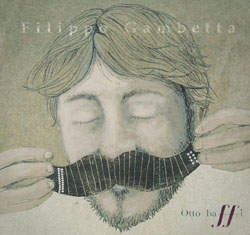
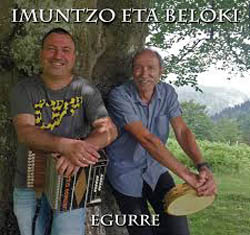
|
-
The Genoese diatonic accordion player Filippo Gambetta brings together two dozen musicians in his recent 12-track studio effort, Otto Baffi. Gambetta introduces us to a variety of folk dances which incorporate such diverse dances as tarantellas, mazurkas, and even forro, the genre originating in northeastern Brazil featuring the accordion and triangle...
Another wide-ranging accordion album of recent vintage is Egurre, the most recent effort by Imuntzo eta Beloki, the Basque accordion-tambourine duo. Like the Gambetta record, it canvasses a variety of genres such as Mexican and cumbia. But while the Gambetta disc is an accordion teacher's record, this has a completely different feel. With at least half-a-dozen recordings, most of which I seem to have accidentally accumulated, this veteran duo seems to personify just about everything about country music - Basque Country that is!
Read David Cox's review and listen online.
|
|
|
-
For Romani brass band Fanfare Fanfare Ciocarlia, Onwards to Mars seems appropriate, considering the group from Romania is celebrating its 20h anniversary and seemingly stopping at nothing to perform work beyond the earthily expected. The fourteen tracks continue the group's trend of making connections between numerous rhythmic and melodic elements from seemingly disparate cultural contexts, as well collaborating with artists from different regional and linguistic backgrounds.
Dylan McDonnell takes you for the ride.
|
|
|
-
Ferhat Tunç is the kind of singer, rare in today's popular data stream, who must bear witness to the politics of his art in everyday life. Despite having been persecuted, sentenced, and jailed for his sonic activism, if not also because of the infractions inflicted upon him by his own government, Tunç has persevered in focusing his attention on those who have, less fortunately, paid with their lives. Recorded in Istanbul and Oslo, Kobani is Tunç's deepest mission statement yet. As the booklet explains, "he shows his solidarity with Kurds, Alevis, Yazidies and Armenians, by writing and performing songs about their stories, their suffering and pain, their hopes and the richness they bring to Anatolia and Mesopotamia." And by sheer scope of his outreach, which in this album extends farther than ever before, one can only hope that his revelations ring true, especially for those too disconnected to even imagine such horrors occurring right outside their windows...
Tyran Grillo explores a voice and sound of protest from Turkey.
|
|
|
-
A lot of interesting and unusual artists find their way to RootsWorld every month, and it is always wonderful to sit down with one of their recordings, one that just stops me dead in my tracks, and listen from beginning to end. Mateja Gorjup's Ijekaru is one of those recordings. Gorup comes from Slovenia and she has a deep interest in the traditional music of her country and other cultures nearby. She can sing with the purity you find in an old field recording - a pure, guileless delivery that is captivating, whether she is singing from an old book of traditional tunes or performing one of her own compositions based on the tradition. But she is also a vocal explorer, someone who lives in the 21st century and revels in all the myriad influences and tools that modern communications can bring.
Listen to a few songs and learn more about this unusual artist.
|
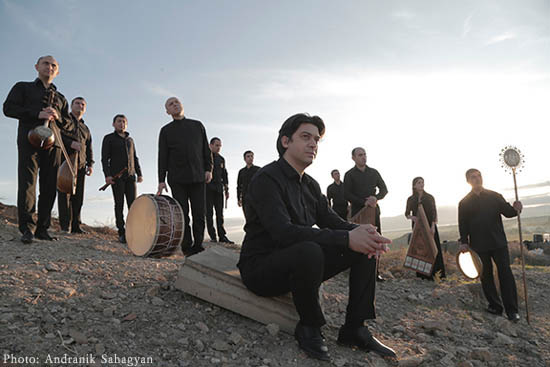
|
-
"Komitas is always in the heart of Armenian musicians and Armenians in general."
Levon Eskenian is an Armenian composer and pianist who was born in Lebanon. With The Gurdjieff Ensemble he explores the deep well of Armenian music as imagined by the priest, musicologist and composer Komitas. Erik Keilholtz reviews Eskenian's latest recording and Tyran Grillo talks with him about his music.
Read both articles and listen to some of the new music.
|
|
|
-
Musicians and scholars throughout the world have often drawn aesthetic, historical, or mythological connections between the blues as it is known throughout the US and different styles of music stemming from regions of Africa. With Ligerian Blues, the Franco-Malian trio Deltas adds yet another strand to this conversation, highlighting imagined and/or real connections in name and sound alike. Deltas began as a duo based in Angers, France, formed by guitarist Vincent Erdeven of dub group Zenzile and violinist/kora player Richard Bourreau of WOMAD-circuit veterans Lo'Jo. The two-piece expanded to a trio following their eponymous début in 2013 after collaborating with ngoni player/singer Andra Kouyaté, originally of Bamako and sideman with Ivorian singer Tiken Jah Fakoly. Thus, the imagery of the word “Ligerian” (a seeming portmanteau of the Loire and Niger rivers) evokes a symbolic merging of the geographic and musical origins of the musicians themselves, while the group's name recalls the Mississippi delta, the hallowed “source” of the blues... Dylan McDonnell takes you down to the Ligerian Delta.
|
|
|
-
Saba Anglana, born in Somalia to an Ethiopian mother and an Italian father, has articulated and refined a self-described “italoafricana” cultural identity that is something new and, as her fourth and latest release attests, powerful and compelling. Ye Katama Hod (The Belly of the City), recorded in Turin and Addis Ababa, with Italian and African musicians, comprises nine tracks written by Anglana and her producer, arranger, and band member Fabio Barovero... Born in Mogadishu, Somalia's capital, she went into exile with her parents when she was a child... Raised in Italy, she received a degree in art history, and, in the early 90s, embarked on an acting career in television. But she retained a connection to her African roots, visiting her mother's relatives in Ethiopia and studying the Somali language. Her new CD explores urban life, the place that “contains the visceral aspect of its existence, such as in its ghettoes, its suburbs, its most vulnerable groups."
George de Stefano takes you to the places she writes of, and shares the music.
|
|
|
-
Audio-Video Special Feature
Cypriot trio Monsieur Doumani sing their new song, "Akamas' dragons," a powerful plea to save the unspoiled peninsula of Akamas in Cyprus from commercial development. Listen, watch, download and learn.
|
|
|
-
The Music of Haïti
There's a lot of new music coming out of Haiti this year, not least of which are two exceptional releases of Haitian roots music (mizik rasin): a dazzling debut from a young group of all-stars, and a stunning return to form from a group of seasoned veterans. Those veterans are RAM, the legendary Haitian roots ensemble and their newest release, RAM 6: Manman m se Ginen. The debut comes in a strong new recording by Lakou Mizik titled Wa Di Yo.
Tom Pryor digs deep into the music of both bands in his review, along with presenting full songs from each album.
|
|
|
|
-
Audio Feature: a Haitian folk song
Leyla McCalla is an American musician of Haitian descent, probably best known for her work with The Carolina Chocolate Drops. But for a number of years, she has been working on her own, developing a personal approach to music that encompasses her Haitian roots, American folk, Louisiana traditions, as well as gospel, jazz and classical music. We're pleased to present a song from her new album, A Day For The Hunter, A Day For The Prey. Since we're focused on the music of Haiti this month, you can listen to her rendition of a traditional song from the island,
"Peze Café".
|
|
|
|
-
Värttinä formed over 30 years ago, and this is their 13th studio record. They've moved all over the folk-roots-world music map, roaming from kanteles and accordions to electro dancematic this-and-that, with various journeys into Broadwayism and Eurovisionesqueness. Much of this was well-crafted, enjoyable music. Sometimes it was spectacular, too often it was not. Their latest recording, Viena puts the voices front and center where they belong. It's less about atmosphere and more about singing.
No matter what you know about the band, Greg Harness thinks this may be the Värttinä record you've been waiting for.
|
|
|
-
When applying the epithet ethnic to a singer's style, one should be careful, because one doesn't always know what it meant back when it was coined. But then again, sometimes you are so sure of its meaning that you don't care. This is it. This is really ethnic. Sanna Kurki-Suonio sounds like the earth mother, the voice of the people. And now we have her newest collaboration, as a band, called Sanna Kurki-Suonion Kuolematon Erikoissysteemi, The Immortal Special System of Sanna Kurki-Suonio. It's tradition, it's prog-rock, it's blues and rock and jazz and folk.
Waldemar Wallenius tries to curb his enthusiasm for the new and unique recording. Listen to some songs and read his thoughts.
|
|
|
-
Hurdy-gurdy master Matthias Loibner is no stranger to pushing the envelope of what his instrument can do. On previous albums he has worked with extended techniques, electronic processing, and musical ideas from well outside the European hurdy-gurdy tradition. Lichtungen continues this exploration. Although the recording opens with a lovely cantabile melody, and uses the counter-rhythms and drones that are associated with the hurdy-gurdy, it is the wide timbral spectrum that grabs and holds the listener's attention. Loibner's delightful timbral play never comes across as gratuitous, nor does it overshadow his virtuosity on the hurdy-gurdy.
Erik Keilholtz explores the artist's honest quest for new sounds on an ancient instrument.
|
,
This web site is optimized for any good browser.
Notscape and Internet Exploder will also work well here.
We won't make that choice for you.
The Hollow Ear: no roots, new routes
Featured CD link: Lodging... food... gas?: travel reviews
Hear.cc: Hearing Health Information
Please contribute to our survival.
About RootsWorld: RootsWorld is a world music magazine started in 1993, pretty much at the dawn of the term "world music" as well as the pre-dawn of internet publishing (I suspect this was the first music magazine of any sort published on the www). Our focus is the music of the world: Africa, Asia, Europe, Pacifica and The Americas, the roots of the global musical milieu that has come to be known as world music, be it traditional folk music, jazz, rock or some hybrid. How is that defined? I don't know and don't particularly care at this point: it's music from someplace you aren't, music with roots, music of the world and for the world. OK?
All pages at RootsWorld are © 1992-2015 Cliff Furnald / FNI Multimedia Publishing, New Haven CT
The RootsWorld name is protected by US trademark law.
All picture and sound images are the property of the artists and record labels, and are protected by copyright. No file or part of a file may be used for any purpose, commercial or non-commercial, without the express written consent of RootsWorld or the other copyright owners.
About the use of sound files and copyright protections at RootsWorld
|

